 Cars
Cars| page 2 | (go to cars page 1 or go to cars page 3) |
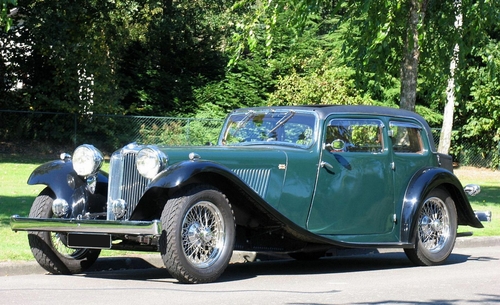
Before the second world war the firm Jaguar was called Swallow Sidecar, so that would spell SS, but the name Jaguar was used for some of its models. I especially very much like the relatively low wind-screen of this car. It gives the car a modest but at the same time a brutish look, because it makes the hood and the wheels look relatively large. I stole this picture from Classicar Images, a Dutch website many different garages take part in.
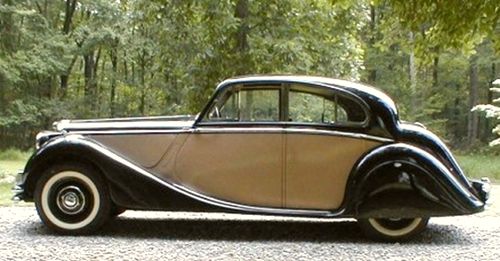
Jaguar was one of the few brands that even after the second world war succeeded in building elegant automobiles. Especially note the shape of the back, the window in the rear door, and the back mud-guard.
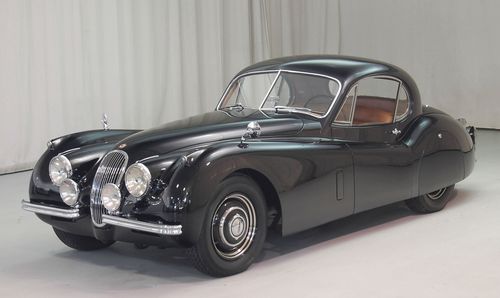
Everything in this car is beautifully rounded. Note the side-window in the shape of a water drop. The convertible-version I think is also very beautiful. This picture is from Hyman Ltd.
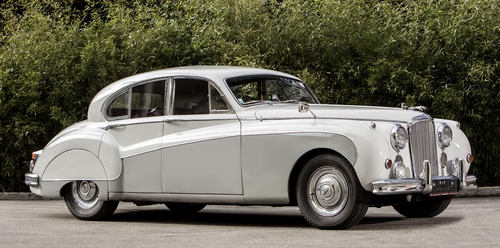
Note the line in the back of the rear door, that is shaped, looking a little like a 3. I stole this picture from Bonhams Auctioneers.
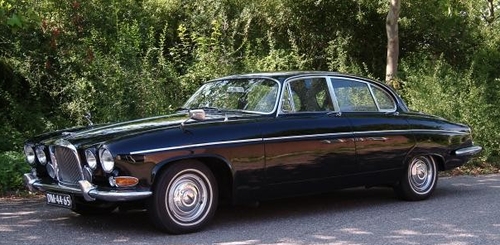
An automobile like a battleship. I am very much attracted to the way the line of the car in a view from the side goes slowly up from the hood and then after having passed the windows subtly goes down again to drop over the trunk. But it might just be a problem to find yourself some parking space in the city. A car like this one should really only be used to get from the front door of your palace to the road. Outside the enclosure of your palace you will drive in your Dolly (a Citroën 2 CV, which I will show later on).
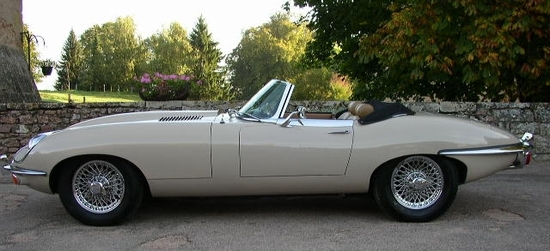
A very famous car, which until this very day can sometimes be seen driving on the roads. In America this type is called XKE. The two-door-version of this car (with a third door in the back) is also very beautiful. Jaguar built E-types until 1974, and I think after that time no really beautiful cars have been built anymore. This picture is from ACCLC.
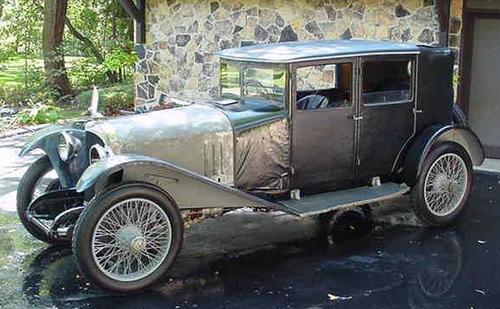
Voisin was a factory that built aeroplanes near Paris, and built automobiles in the years between the two world wars. Those cars were famous for the use of sleeve valves (the valves in most automobile engines go up and down to let the fuel in and out, but sleeve valves slide along the side of the cylinder, resulting in a much more quiet engine but also one that needs a lot more maintenance). Beautiful, this large space for the front wheel. And it looks like a Weymann-coach (I think I see creases in the part between the engine hood and the front door). I stole this picture (which unfortunately is not very sharp) from Galleria Style & Auto.
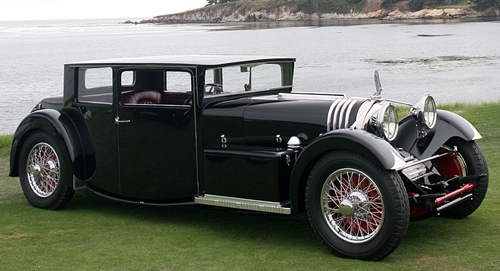
Well, this is what you would call a head-turner. Imagine yourself driving this to the local supermarket. Gee, what a car. It looks like it's big enough for four people. This picture too was taken at the area of the Pebble Beach concours. Especially note the round line beneath the door. What more shall I say? Excessive, arrogant, aristocratic attention to one's money and means had a more stylish look in the twenties and thirties than it has today. Does that make sense?
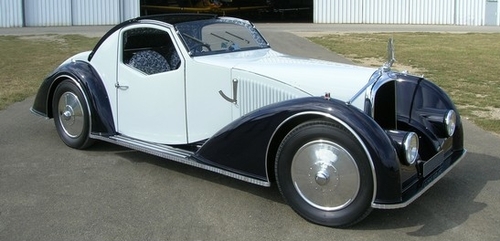
Speaking of a head-turner. Beautifully unconventional, this design. It looks like there's an aeroplane in the hangar in the background. I bet it's a Voisin plane. Note the sliding roof of the car. I think the word Aerosport means a certain body-style, and that it is not the name of a coach-builder.
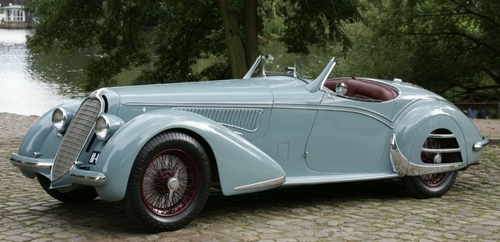
After the first world war director Romeo named the car-factory ALFA after himself. Ever since the factory near Milan is called Alfa Romeo. A big and stylish sportscar in which you should especially note the three horizontal bars in front of the rear wheel. Superleggera is the name of the system of ultralight coachworks that Italian coach builder Touring devised. I stole this picture from E. Thiesen.

A nice coupé, beautiful rear and a very beautiful colour. It looks like the side windows shove to open. This picture is from the Blackhawk Collection. Touring is the coach builder for this car too.
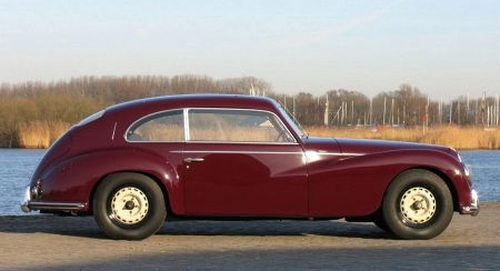
A strikingly beautiful and modest design. This must be one of the first post-war models that were built. Since 1933 Alfa Romeo was owned by the Italian government, and after the war it took them a long time to resume production. The name of the model is almost the same as the nine year older car above. Maybe the body is the only difference between the two. This picture is from Classicar Images.
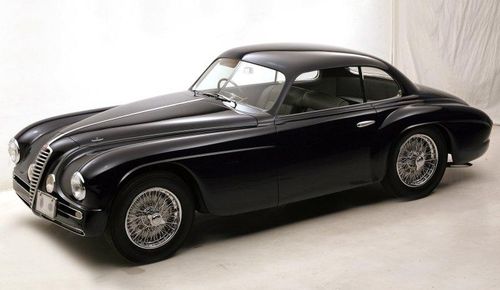
Again that same name for the model. This beautiful, round lines remind me a bit of the Jaguar XK 120 (from 1949 as well). This picture is from Symbolic Motors, sellers of cars in San Diego, United States.
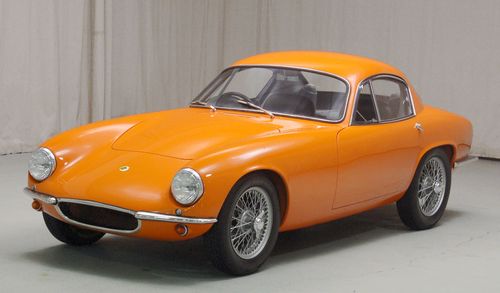
Lotus was founded after World War II by the Briton Colin Chapman. The brand is famous for the low weight of their cars. A Lotus usually has a much smaller engine and less power than their competition, but because of the low weight it has a top speed that is just as high. A famous quote by Chapman is: "Simplify, then add lightness." This picture is from Hyman Ltd, who mentioned that this car was designed by an accountant.
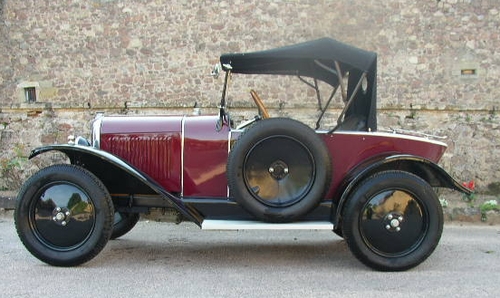
Citroën is a famous car-factory in Paris. It was a leading brand in automobile history, introducing numerous innovations. I'm not sure whether this is, strictly spoken, the car that was nicknamed 'Clover-leaf' (because the seats are positioned in a triangle-shape, with the one back seat in the middle behind the two front seats). It doesn't seem so. But isn't it a cute car! Dupont and Dupond (Thomson and Thompson in the series Tintin) drive a car like this before they change to driving a Citroën 2 CV. This picture is from ACCLC.
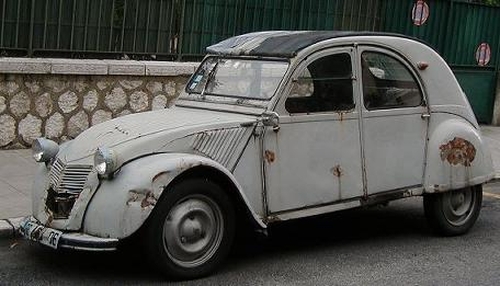
The Duck (or Tin Snail, in French seemingly sometimes called 'umbrella on wheels'). One of the few cars that even in a neglected state is just as convincing as it is when shiny and new. I don't find the 2 CV particularly beautiful, but fascinating nonetheless. The idea to build a car with as cheap and simple materials as possible, is I think admirable. This is an older 2 CV; it has a hood with ridges, a signal-light where in later models a third side-window is, and front doors that open backwards.
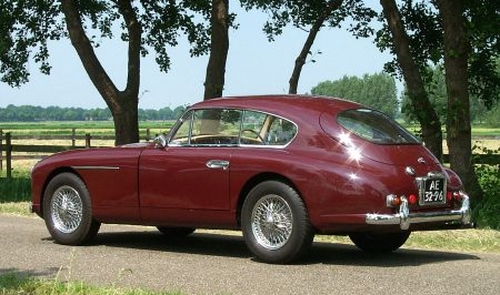
Aston Martin is a British car factory that built beautiful cars until the sixties, but went on to build bragging cars after that. This one has a wonderfully chubby back. No hotch-potch, no frills. What you see is what you see. This picture is from Classicar Images.
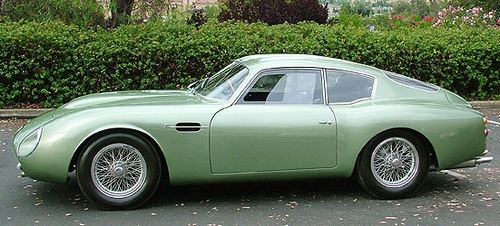
For extra speed, reduce the number of kilos. Even a side-window that can be moved up and down by turning a handle is an extra luxury that can be left out. Zagato is the name of the (Italian) coach-builder, that has designed many fast, slender, low cars.
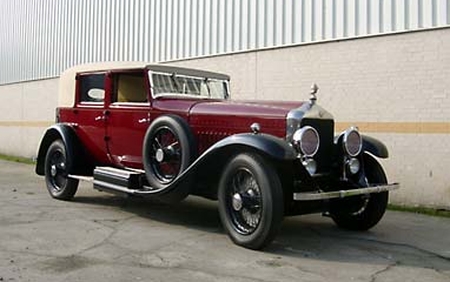
Minerva was the firm of a Dutchman who emigrated to Antwerp in Belgium, Sylvain de Jong, who built automobiles from the turn of the century until the second world war. Just like Voisin also Minerva used engines with sleeve valves. This picture unfortunately isn't very sharp. Faux Convertible means that the car's roof cannot be folded downwards, but that it nevertheless looks like it could. Hibbard & Darrin is the name of the coach-builder.
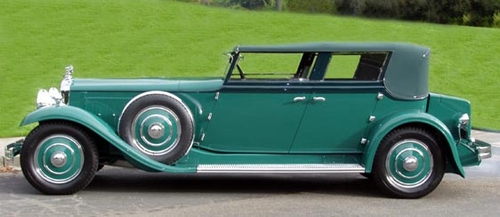
Wonderful, those doors that look like they're hanging backwards. Minerva became somewhat famous because regarding their luxury the cars were not or hardly inferior to Rolls-Royce, although their prices were lower. Rollston is the name of the coach-builder. This picture is from the Blackhawk Collection.

Jensen originated in the thirties, run by the Jensen brothers. The factory had its seat in the Birmingham area, and built cars until 1976. I think this corner between the rear side-window and the rear window, where the small signal-light is, is very beautiful.
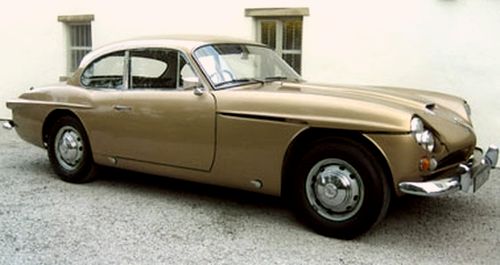
Because the headlights of this car are positioned in a V-shape, seen from the front it looks like the car is frowning.
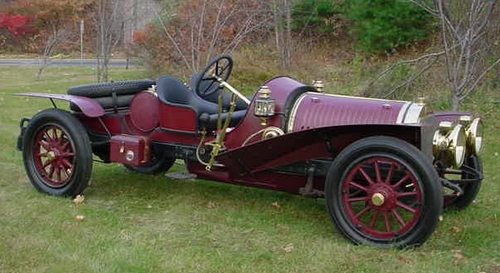
Hotchkiss was founded near Paris by an American who had migrated to France, and started out as a factory of weapons (like other car-factories, such as Citroën and Alfa Romeo). Pay attention to the wooden spokes, the ball next to the front chair you need to pinch to make the horn sound, the oil-lamps next to the dashboard, the petrol tank behind the chairs and the small trunk directly under it. I just love those details! VanVooren is the name of the coach-builder. I stole this picture from Dragone Classic Motorcars, sellers of cars.
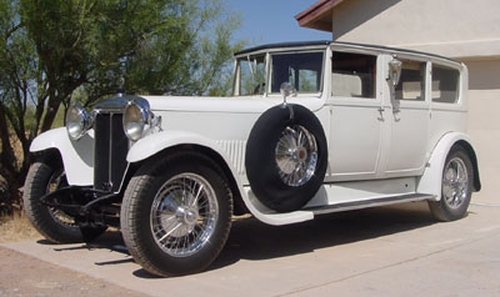
Daimler was the name of the firm Gottlieb Daimler had founded in Germany (it was one of the first car-factories in the world) and the name of the firm in England they licensed the car design to. After 1908 no cars with the name Daimler were built in Germany anymore (the name was changed into Mercedes), but the British company kept building cars, in Coventry. Note the little lanterns on the side, the bar in the middle of the wind screen and the cloth that covers the spare tire. Unfortunately in this picture Daimler's trade-mark can hardly be seen, the ridged top of the radiator.

Bentley was a British firm founded in 1919 by W.O. Bentley. It was independent until it was sold to Rolls-Royce in 1931. At first Bentleys, despite their weight, were very succesful in racing (Ettore Bugatti called those cars "the world's fastest lorries"), but later on Bentley built luxurious cars, similar to Rolls-Royces, only without the angel on the front of the hood. Thrupp and Maberly is the name of the coach-builder. I stole this picture from Charles Crail Automobiles, car sellers in California. They asked a price of 700.000 dollars for it.

Such a beautiful car with luxurious looks. Note the winged capital letter B on the front, the British flag underneath, and the subtle red stripe of paint on the side of the car. Park Ward is the name of the coach-builder. This picture is from The Real Car, dealers in early Rolls-Royce and Bentley cars.
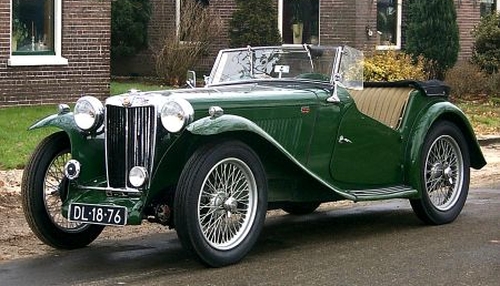
When one of Morris' dealers in Oxford started selling Morris cars with some adjustments he had made to it, this brand was called MG, short for Morris Garages. The factory was closed in the seventies. Apparently after the second world war many American soldiers took an MG home with them. Note the small British flag on the side, just below the window.
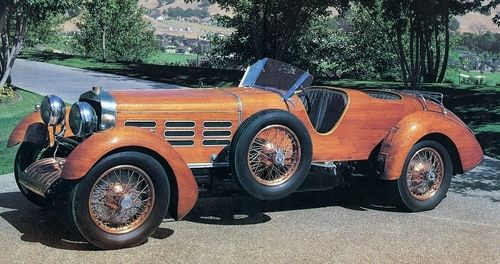
Hispano-Suiza was a (the name gives it away) partly Spanish and partly Swiss firm that built luxurious automobiles from the turn of the century until the second world war. The seat of the firm was in Barcelona, and its chief designer was a Swiss, called Marc Birkigt. Many of the cars were built in Paris, France. I take the word 'Tulipwood' to mean that the body of this car is fitted with small wooden boards (just like the Lagonda Rapide from 1939 on page 1, which bears a strong resemblance to this Hispano-Suiza). It looks like there's room for four people, but the passengers have no door of their own. And it seems all luggage needs to be transported on the small rack on the back. But I wouldn't mind.
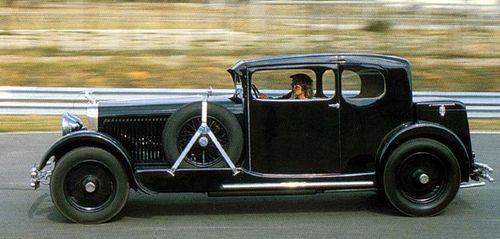
A very big (watch how big the heads of the people in it are) and yet graceful car. I understood that the stork the brand used as an emblem (atop the radiator is a stork balanced on the tips of its wings) can be taken as a sign of French revanchism.